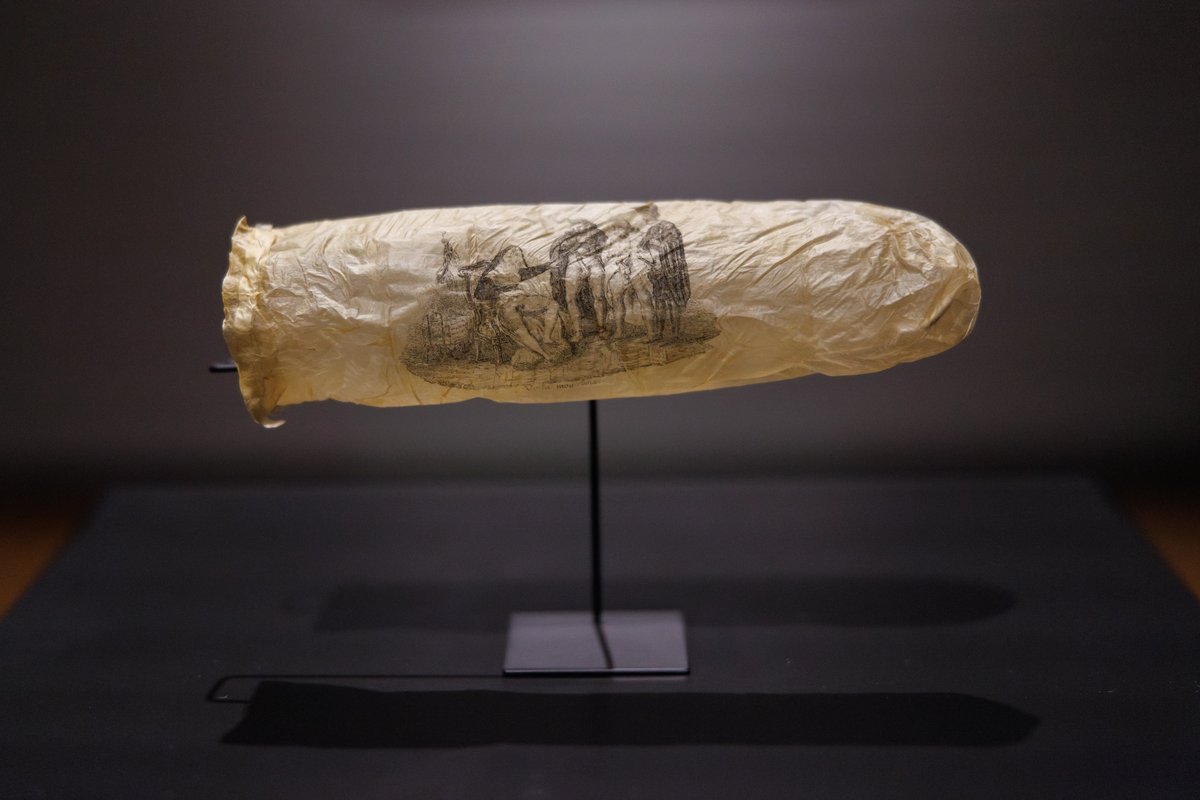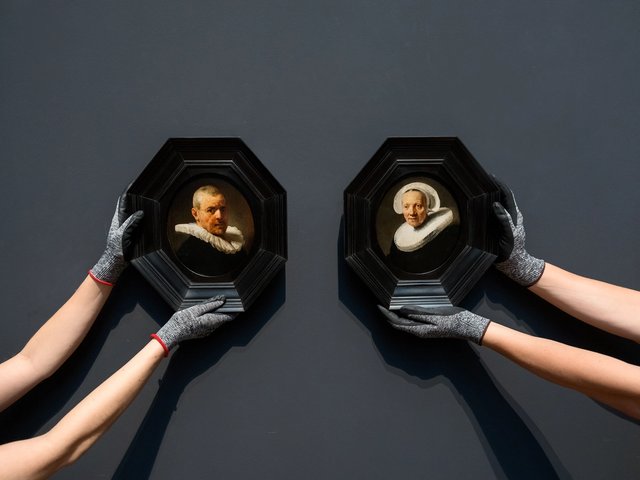A Christian group is protesting against what they call the “outrageous sacrilege against Catholics in the Rijksmuseum” after the national museum in Amsterdam acquired and displayed a condom from 1830 featuring an erotic etching of a nun and three clergymen.
The historic prophylactic, which is part of a small exhibition on prostitution in the 19th century, is made from a sheep’s appendix and would apparently have been washed and reused in the hope of preventing pregnancy and sexually transmitted diseases such as syphilis.
Acquired at auction earlier this year, the object riffs on the popular artistic theme of the judgement of Paris—when, according to Greek legend, a shepherd was chosen by Zeus to decide which of three goddesses was the most beautiful. In this version, however, a semi-naked nun is faced with three erect members of the church, with the inscription: Voilà mon choix (this is my choice).
However, a Christian foundation Stichting Civitas Christiana and affiliated youth group TFP Student Action Europe, have mounted a petition calling the display “a grotesque insult to God, the Catholic Church and the entire Dutch nation”, and last week demonstrated and distributed some 5,000 flyers outside the museum.
They claim the condom was a kind of propaganda during the French Revolution when the church was persecuted, while an article in De Dagelijkse Standard claims that “a caricature of Mohammed—even from the 18th or 19th century—would be unthinkable in the Rijksmuseum, not because they don’t exist, but because people are afraid.”
A spokesman from the Rijksmuseum pointed out that the Christian group has previously been banned by a court from making unlawful claims about a sexual health week, and said that there were 11 protesters outside the museum for two days last week.
The co-curator of the show and curator of prints at the Rijksmuseum, Joyce Zelen, says, though, that visitors are queuing up to see its unique exhibit. “Mocking religion is as old as religion itself,” she says. “I don’t think this is a response to the French Revolution and the Catholic church. It’s meant to be funny.”
The exhibition describes a time when syphilis was so rampant that prostitution was legalised, sex workers were taken by police for regular sexual health tests and semi-effective condoms were sold discreetly at barbershops and specialist stores against disease and conception.
“Normally, an etching you can print a few thousand times, but paper is easier to print [on] than sheep’s appendix,” she adds. “We do know through oral history that making condoms was often something the farmer’s wife did with the remains of sheep, or the wives of fishermen, because condoms were also made of fish bladders. But I know nothing about an industry of condom production in the 19th century and printmaking associated with it, because none of the prints on the surviving condoms have a name of a printmaker.”
Visitors to the Rijksmuseum were intrigued. “It’s different,” Wendy Kindred, from Australia, tells The Art Newspaper. “We are in Amsterdam, a place with a lot of sexual history. It’s a piece of history.”






